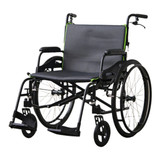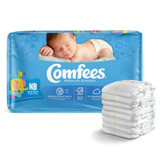How Many Diapers Does a Baby Use?
Understandinghow many diapers a baby uses is vital for parents. Properly managing diaper needs ensures the baby's comfort and helps in planning expenses effectively.
Factors Influencing Diaper Usage:
- Age: Newborns typically require more frequent changes compared to older babies.
- Diet: Babies on breast milk may have different diaper patterns than those on formula.
- Health Conditions: Certain health issues might lead to increased or decreased diaper usage.
Parents who understand these factors can better predict their baby's needs, ensuring they always have enough supplies. This knowledge helps maintain cleanliness and prevent any discomfort for the baby.
Average Diaper Usage per Day
Understanding the average diaper usage per day helps parents plan effectively. Babies generally need frequent diaper changes to stay comfortable and healthy.
General Range of Diaper Changes Based on Age Group
Newborns (0-1 month)
- 10-12 diapers per day
- Newborns tend to urinate more frequently, requiring more changes.
Infants (1-5 months)
- 8-10 diapers per day
- As they grow, the frequency of wetting might reduce slightly.
Older Babies (6-12 months)
- 6-8 diapers per day
- The rate of diaper changes decreases as solid foods are introduced.
Regular checks for wetness or soiling are essential. Diapers should be changed promptly to prevent rashes and discomfort, usually every 2-3 hours. This routine ensures that babies remain dry and happy throughout the day.
Monthly Diaper Consumption
Estimating monthly diaper consumption helps parents plan effectively. A simple calculation can provide a good estimate:
Calculation for Newborns
If a newborn uses about 10 diapers per day:
- Daily usage: 10 diapers
- Weekly usage: 70 diapers (10 diapers x 7 days)
- Monthly usage: Approximately 280 diapers (70 diapers x 4 weeks)
Variations in Diaper Needs
As babies grow, their diaper needs change. Here are some typical variations:
- Newborns (0-1 month): Up to 10-12 diapers per day, around 300-360 per month.
- Infants (1-5 months): About 8-10 diapers daily, totaling roughly 240-300 per month.
- Older Infants (6-12 months): Typically need 6-8 diapers a day, which equals around 180-240 per month.
Tracking these variations helps anticipate changes. As babies transition through different developmental stages, factors such as increased mobility and dietary changes impact their diaper needs. Adjusting the number of diapers purchased can help in managing costs and ensuring the baby’s comfort and hygiene.
Transitioning to Larger Sizes
Duration of Newborn-Sized Diapers
Babies typically use newborn-sized diapers for around 2-3 months. During this period, their rapid growth often necessitates frequent changes in diaper sizes.
Indicators for Upsizing
Several signs indicate it's time to transition to larger sizes:
- Frequent Leaks: If the current size cannot contain the baby's waste effectively, leading to frequent leaks.
- Difficulty Fastening: Struggling to fasten the diaper comfortably without leaving red marks on the baby's skin.
- Weight and Size Guidelines: Checking the weight range specified on the diaper packaging helps ensure an appropriate fit.
Importance of Proper Fit
Ensuring a proper fit is crucial for several reasons:
- Comfort: A well-fitting diaper prevents chafing and discomfort, allowing the baby to move freely.
- Prevention of Leakage Issues: Properly sized diapers contain waste better, reducing the likelihood of leaks.
- Hygiene: A good fit helps maintain cleanliness and reduces the risk of rashes or infections.
Tracking these indicators will help parents manage diaper changes efficiently while ensuring their baby's comfort and hygiene.
Frequency of Diaper Changes
Maintaining good hygiene by changing diapers at the right intervals is crucial for preventing rashes and infections. Knowing thefrequency of diaper changes helps in keeping the baby comfortable.
Recommended Time Intervals
- Newborns: Change every 2-3 hours even if they don’t seem soiled, as newborns tend to urinate frequently.
- Infants (1-5 months): Continue with the same frequency, though some babies may need less frequent changes as they grow.
- Older Babies (6+ months): You might notice fewer diaper changes are needed, but it's essential to check regularly and change when wet or soiled.
Signs of a Needed Change
- Wetness Indicator: Modern disposable diapers often have a line that changes color when wet.
- Fullness: If the diaper feels heavy or sagging.
- Odor: A noticeable smell can indicate it’s time for a change.
- Discomfort: If the baby seems fussy or uncomfortable, it might be due to a wet or soiled diaper.
Nighttime Considerations
Using highly absorbent overnight diapers during nighttime can reduce the need for changes, allowing both baby and parent to sleep longer stretches. However, always ensure the baby is dry before bedtime to reduce risks of rashes.
Regularly checking and changing diapers aligns with best practices in baby care, promoting overall health and comfort.
Cloth Diapering as an Alternative Option
Using cloth diapers can be a sustainable and economical choice for many parents. Here are some key points to consider when thinking about cloth diapering:
Advantages of Cloth Diapers
- Reduced Environmental Impact:
- Disposable diapers contribute significantly to landfill waste.
- Cloth diapers can be reused multiple times, reducing the amount of waste generated.
- Cost Savings:
- Although the initial investment in cloth diapers might be higher, they can save money over time.
- Reusable nature means fewer purchases compared to disposable diapers.
Disadvantages to Consider
- Increased Laundry Workload:
- Cloth diapers require regular washing, which can add to the household laundry burden.
- Need for proper cleaning techniques to ensure hygiene and longevity of the diapers.
- Frequent Changes:
- Cloth diapers may need to be changed more often than disposable ones.
- Parents need a sufficient supply on hand, typically around 20 newborn-sized cloth diapers.
Key Considerations
- Parents must balance the environmental and economic benefits against the added maintenance efforts.
- Understanding how to clean and care for cloth diapers is crucial for maintaining their effectiveness and durability.
Using cloth diapers can be a viable option with thoughtful planning and management.
Conclusion
Understanding diaper usage is crucial for parents to ensure their baby's comfort and well-being while managing costs effectively. Here are a few key takeaways:
- Track Diaper Patterns: Keeping an eye on your baby's diaper usage can help identify their unique needs. Monitor how often diapers are changed and adjust supplies accordingly.
- Knowledge is Power: Being informed about average diaper usage, monthly consumption, transitioning sizes, and the importance of regular changes aids in better planning. This knowledge ensures that you are always prepared with the right size and quantity of diapers.
- Cost Management: Knowing how many diapers your baby uses helps in budgeting. Whether opting for disposable or cloth diapers, understanding consumption rates can lead to significant cost savings.
By tracking and understanding these patterns, parents can provide optimal care for their babies while efficiently managing resources.
FAQs (Frequently Asked Questions)
How many diapers does a baby use?
Diaper usage for babies is influenced by factors such as age, diet, and health conditions. It is important for parents to understand and manage diaper needs for their baby to ensure comfort and well-being.
What is the average diaper usage per day?
Knowing the average number of diapers a baby may require in a day is significant for planning purposes. The general range of diaper changes based on age group should be considered, with emphasis on the importance of frequent checks for wetness or soiling.
How many diapers are used per month?
Monthly diaper consumption can be estimated by multiplying the average usage per day. It is important to consider variations in diaper needs as the baby grows older or goes through developmental stages.
When should I transition to larger diaper sizes?
Newborn-sized diapers are typically used for a certain duration before outgrowing them. Indicators such as frequent leaks or difficulty fastening the current size suggest a need for upsizing. Proper fit is important in ensuring comfort for the baby and preventing leakage issues.
How often should I change a diaper?
Regular diaper changes at recommended time intervals are essential to maintain good hygiene and prevent rashes or infections.
What are the advantages and disadvantages of cloth diapering as an alternative option?
Advantages of cloth diapers include reduced environmental impact and potential cost savings in the long run. However, disadvantages such as increased laundry workload and the need for frequent changes should be considered.
Why is it important to track a baby's diaper usage patterns?
Parents are encouraged to track their baby's diaper usage patterns to gain a better understanding of their individual needs. Being knowledgeable about diaper usage can help in ensuring the baby's comfort and well-being while also managing costs effectively.
Recent Posts
-
A Comprehensive Guide to Manual Wheelchairs and Transport Wheelchairs
When navigating the world of mobility aids, understanding the distinctions between manual wheelchair …Sep 17th 2024 -
8 Tips To Make Travel In A Wheelchair By Plane Easier
Air travel accessibility is crucial for ensuring that everyone, regardless of physical ability, can …Sep 12th 2024 -
Pros and Cons of Disposable Diapers
The debate between disposable and cloth diapers is a common topic among new parents. Each option has …Aug 21st 2024



